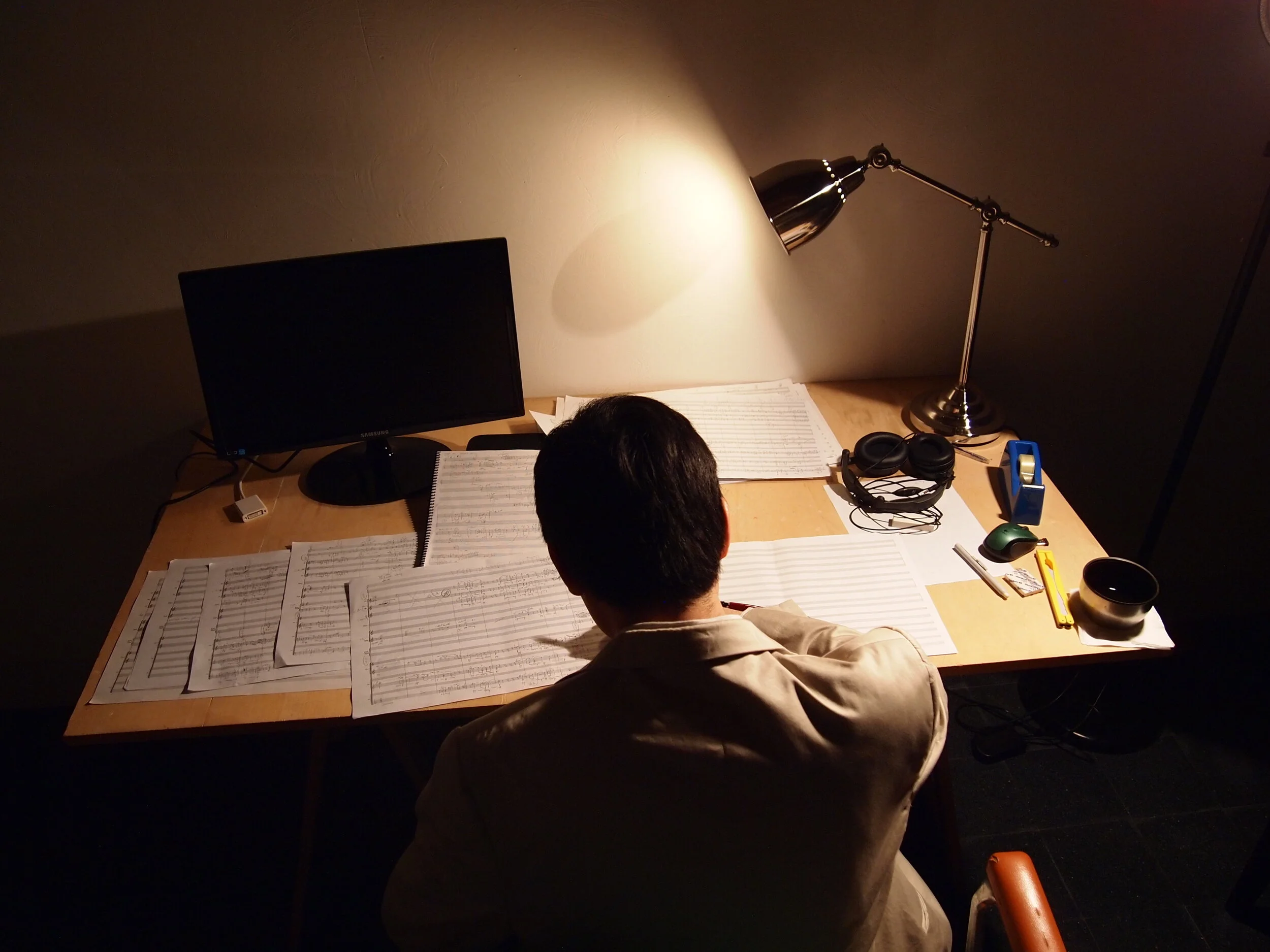Instrumentation: flutes (doubling alto), oboe (doubling cor anglais), clarinet (doubling retuned clarinet and bass clarinet), percussion (1 player), piano/sampler, violin, viola, cello
First Performance: First performance on 14 December, 2012, by the Talea Ensemble, conducted by James Baker. Mannes College of Music, New York
Commissioned by the Koussevitzky Music Foundation in the Library of Congress for the Talea Ensemble. Dedicated to the memory of Serge and Natalie Koussevitzky, the musicians of the Talea Ensemble, and the memory of Ralph Kaminsky.
Duration: 14 minutes
Performance by the IEMA Ensemble (Frankfurt), June 2021
Excerpt (opening, from the Talea Ensemble’s premiere)
SynchroniCities represents a kind of personal sonic travelogue over the last two years, one whose map is organized by similarities and differences of various sonic sources. I'm always struck by how concrete sounds in the world are both overwhelmingly chaotic and commonplace. In collecting and organizing field recordings during my travels, I've come to appreciate the overwhelming and often surprising common ground of sounds originating from disparate sources. I find the paradox of sounds related in timbre but connoting very different cultural or ritualistic practices symbolically and musically rich. And I wonder if semiotic associations and sonic significations can be redefined through the combination and juxtaposition of these differences. Through the use of sometimes subtle but noticeable processing and mutation, and a constant dialogue with the live instruments, I hope to confirm and challenge our sonic perceptions of time, place, and cultural practices.
Some paradoxes of synchronous sounds that struck me: the almost granular rhythmic jitters of subway card swipes are mechanical in their omnipresence, yet very distinctive in pitch and pattern, depending on situation and place. The electronic-sounding hum of cicadas and their blankets of white noise are region and time specific, yet almost universally alike. The hushed near-silence of visitors moving through the sacred spaces of the world resonates and amplifies itself quite audibly with the right filters, leaving artifacts of physical movement and speech not intended to be revealed. And I address these interspersed cultural dialogues in the instrumental writing as well. With the piano, for instance, the standard equal-tempered tuning is "auto-tuned" in real-time to collide with tuning systems from ancient and non-western cultural legacies. What to make of this perceptive dissonance, and how can it be made to sound consonant and even pleasing within its newly-formed identity?
Anthony Cheung
December 2012
